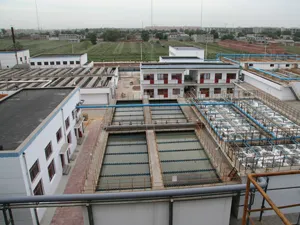Additives for Recycled Plastics Enhancing Quality and Performance
Recycling plastics has become an essential component of environmental sustainability, reducing waste and conserving resources. However, the challenge of enhancing the quality and performance of recycled plastics remains a significant hurdle. One solution lies in the incorporation of additives specifically designed for recycled plastics. These additives can improve physical properties, enhance processing capabilities, and expand the application range of recycled materials.
Understanding Additives in Recycled Plastics
Additives are substances added to plastics to achieve specific properties or improve performance. In the context of recycled plastics, additives play a crucial role in overcoming the intrinsic limitations that often arise during the recycling process. Common issues with recycled plastics include reduced mechanical strength, poor color retention, and inadequate thermal stability. By introducing appropriate additives, manufacturers can address these challenges and produce recycled materials that meet or exceed the performance of virgin plastics.
Types of Additives
1. Stabilizers One of the most significant concerns with recycled plastics is degradation due to heat, light, and oxygen exposure. Stabilizers, such as UV absorbers and antioxidants, protect the polymer matrix from oxidative damage, ensuring longevity and maintaining mechanical integrity.
2. Plasticizers To enhance the flexibility of recycled plastics, plasticizers can be added. This is particularly important for applications requiring ductility, such as flexible packaging materials.
3. Colorants and Pigments Recycled plastics often suffer from color variability. Additives like colorants and pigments can help achieve uniformity and aesthetic appeal. These colorants can be carefully selected to minimize the impact on optical clarity and mechanical properties.
additives for recycled plastics

4. Impact Modifiers Recycling processes can lead to brittleness in plastics. Impact modifiers improve the toughness of recycled materials, enhancing their resistance to fractures and cracks. This is crucial for applications subjected to mechanical stresses.
5. Performance Enhancers Other additives like flame retardants, antimicrobial agents, and fillers may be incorporated to boost specific functionalities. For instance, flame retardants can make recycled plastics suitable for applications in construction and electronics.
Challenges and Considerations
While the use of additives presents many advantages, there are also challenges to consider. The selection of additives must align with the intended end-use of the recycled plastic. Additionally, there is the risk of introducing contaminants that could affect the recycling stream or reduce the overall sustainability of the material. As new recycling technologies evolve, ongoing research is vital to understand the interactions between various additives and the recycled plastic matrix.
Future Directions
The future of recycled plastics will likely see increased innovation in additive technology. Advancements in bio-based additives may offer sustainable alternatives, reducing the reliance on petrochemical products that are often used in conventional additives. Moreover, with growing environmental regulations and consumer demand for sustainable materials, industries are increasingly focused on optimizing the formulation of recycled plastics to ensure they meet both performance criteria and eco-friendly standards.
In conclusion, additives play a pivotal role in transforming recycled plastics into viable alternatives to virgin materials. By enhancing properties such as durability, flexibility, and stability, these additives help in addressing the challenges faced by recycled plastics. As technology continues to advance, the potential for higher-quality recycled materials is promising, further contributing to global sustainability efforts. Investing in research and development around additives for recycled plastics will be essential for unlocking new applications and maximizing the circular economy in the plastic industry.

